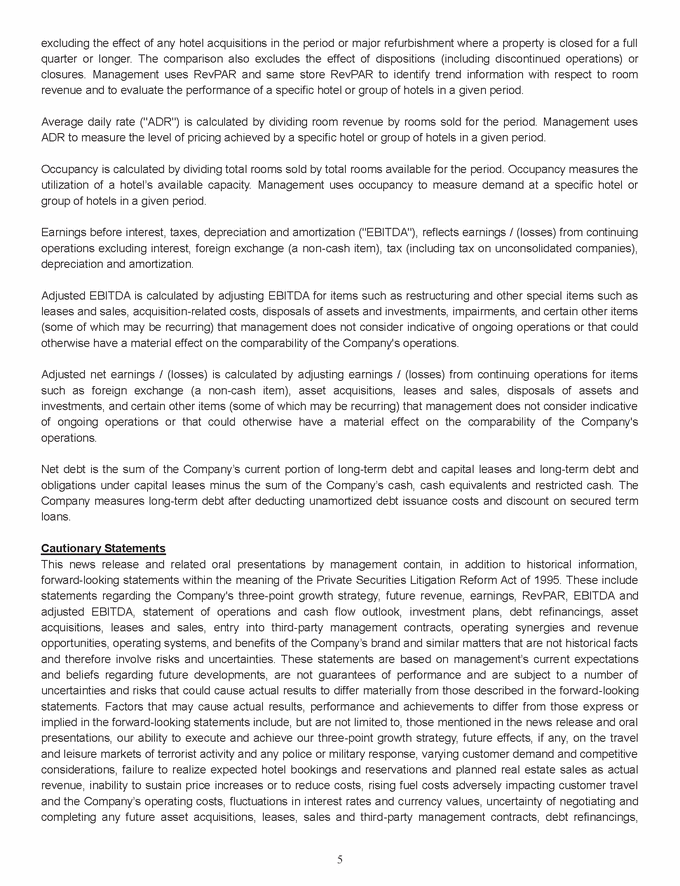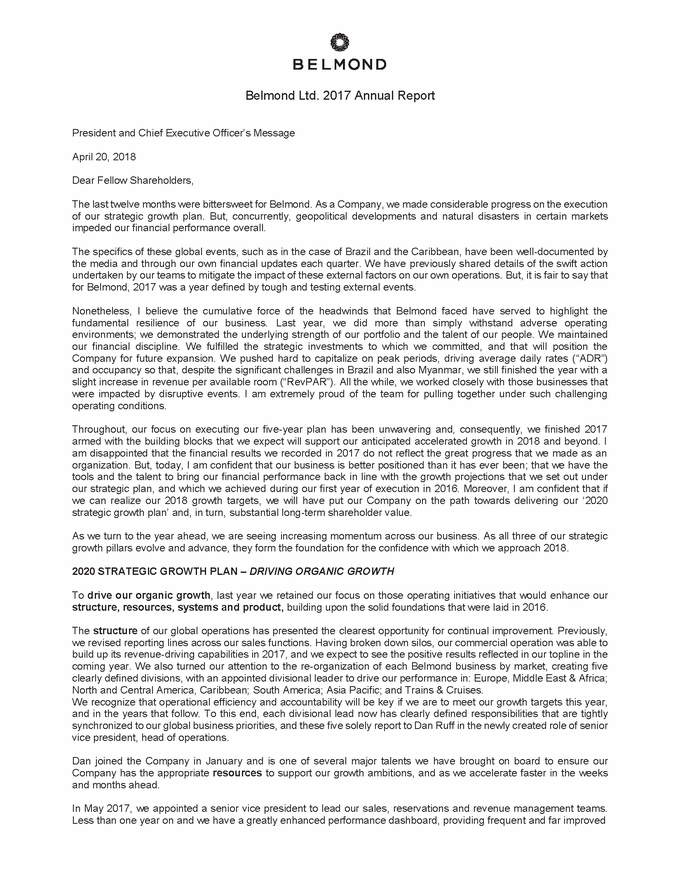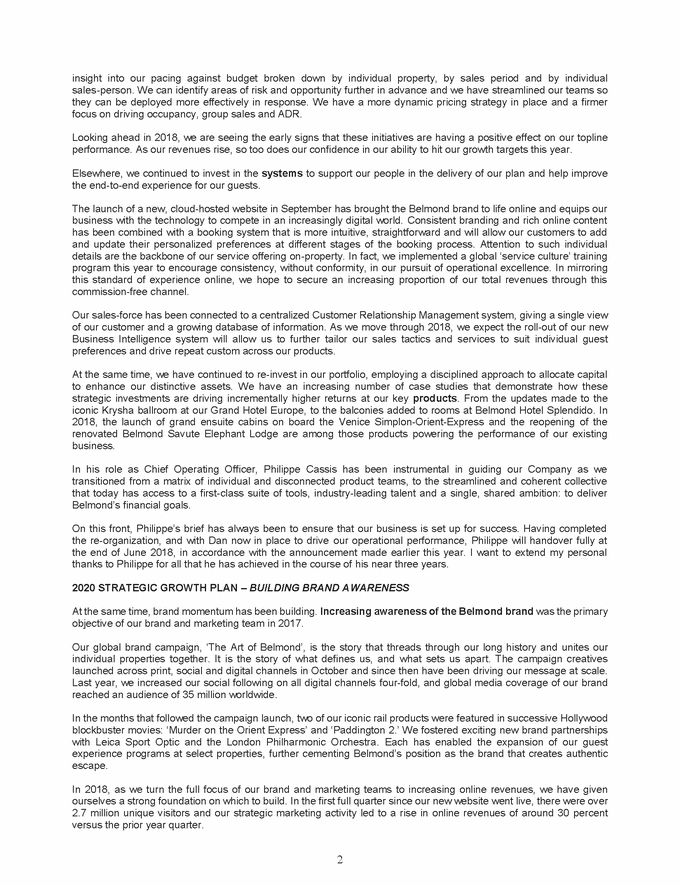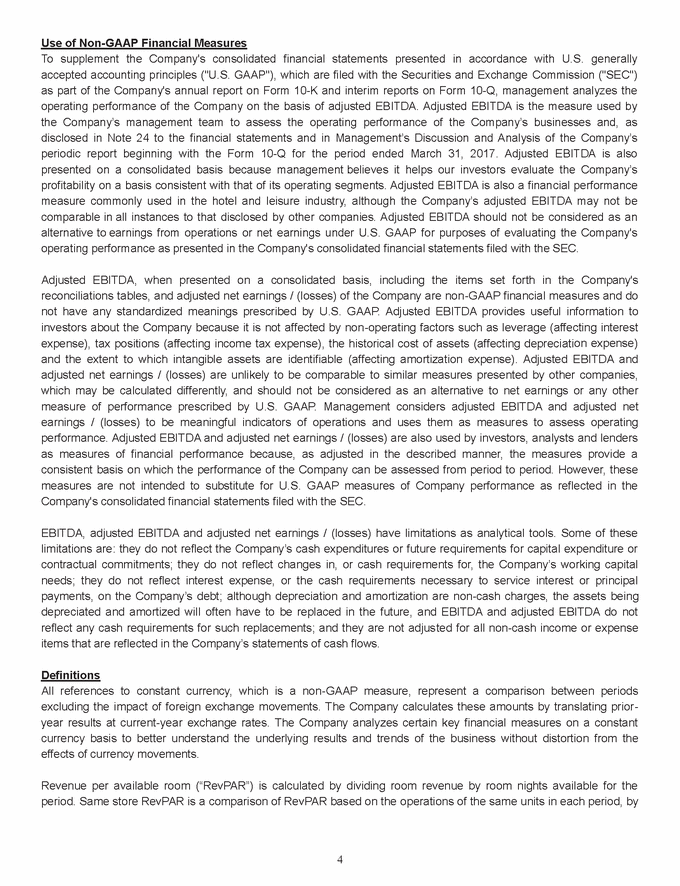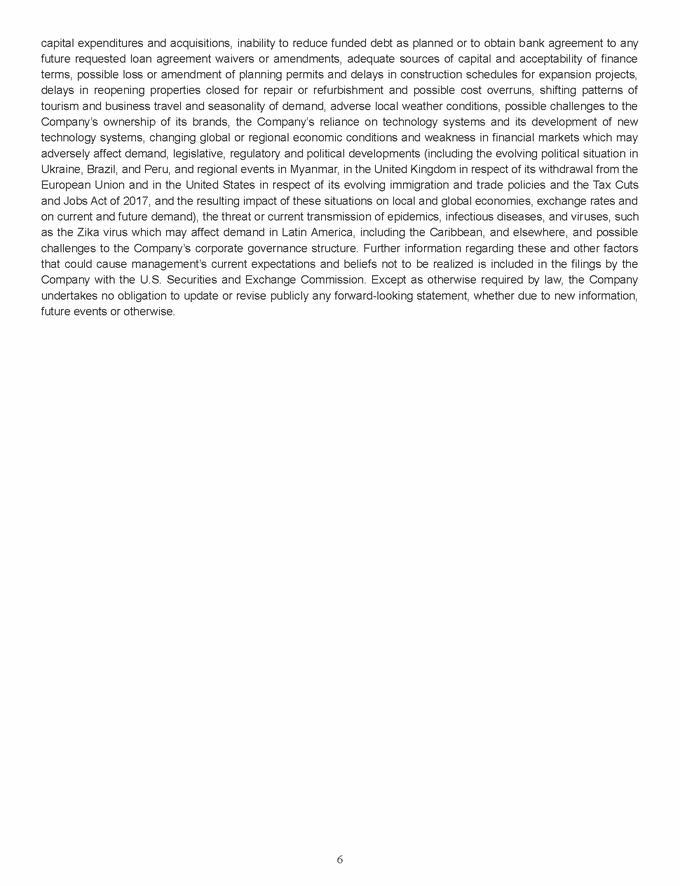excluding the effect of any hotel acquisitions in the period or major refurbishment where a property is closed for a full quarter or longer. The comparison also excludes the effect of dispositions (including discontinued operations) or closures. Management uses RevPAR and same store RevPAR to identify trend information with respect to room revenue and to evaluate the performance of a specific hotel or group of hotels in a given period. Average daily rate ("ADR") is calculated by dividing room revenue by rooms sold for the period. Management uses ADR to measure the level of pricing achieved by a specific hotel or group of hotels in a given period. Occupancy is calculated by dividing total rooms sold by total rooms available for the period. Occupancy measures the utilization of a hotel’s available capacity. Management uses occupancy to measure demand at a specific hotel or group of hotels in a given period. Earnings before interest, taxes, depreciation and amortization ("EBITDA"), reflects earnings / (losses) from continuing operations excluding interest, foreign exchange (a non-cash item), tax (including tax on unconsolidated companies), depreciation and amortization. Adjusted EBITDA is calculated by adjusting EBITDA for items such as restructuring and other special items such as leases and sales, acquisition-related costs, disposals of assets and investments, impairments, and certain other items (some of which may be recurring) that management does not consider indicative of ongoing operations or that could otherwise have a material effect on the comparability of the Company's operations. Adjusted net earnings / (losses) is calculated by adjusting earnings / (losses) from continuing operations for items such as foreign exchange (a non-cash item), asset acquisitions, leases and sales, disposals of assets and investments, and certain other items (some of which may be recurring) that management does not consider indicative of ongoing operations or that could otherwise have a material effect on the comparability of the Company's operations. Net debt is the sum of the Company’s current portion of long-term debt and capital leases and long-term debt and obligations under capital leases minus the sum of the Company’s cash, cash equivalents and restricted cash. The Company measures long-term debt after deducting unamortized debt issuance costs and discount on secured term loans. Cautionary Statements This news release and related oral presentations by management contain, in addition to historical information, forward-looking statements within the meaning of the Private Securities Litigation Reform Act of 1995. These include statements regarding the Company's three-point growth strategy, future revenue, earnings, RevPAR, EBITDA and adjusted EBITDA, statement of operations and cash flow outlook, investment plans, debt refinancings, asset acquisitions, leases and sales, entry into third-party management contracts, operating synergies and revenue opportunities, operating systems, and benefits of the Company’s brand and similar matters that are not historical facts and therefore involve risks and uncertainties. These statements are based on management’s current expectations and beliefs regarding future developments, are not guarantees of performance and are subject to a number of uncertainties and risks that could cause actual results to differ materially from those described in the forward-looking statements. Factors that may cause actual results, performance and achievements to differ from those express or implied in the forward-looking statements include, but are not limited to, those mentioned in the news release and oral presentations, our ability to execute and achieve our three-point growth strategy, future effects, if any, on the travel and leisure markets of terrorist activity and any police or military response, varying customer demand and competitive considerations, failure to realize expected hotel bookings and reservations and planned real estate sales as actual revenue, inability to sustain price increases or to reduce costs, rising fuel costs adversely impacting customer travel and the Company’s operating costs, fluctuations in interest rates and currency values, uncertainty of negotiating and completing any future asset acquisitions, leases, sales and third-party management contracts, debt refinancings, 5
